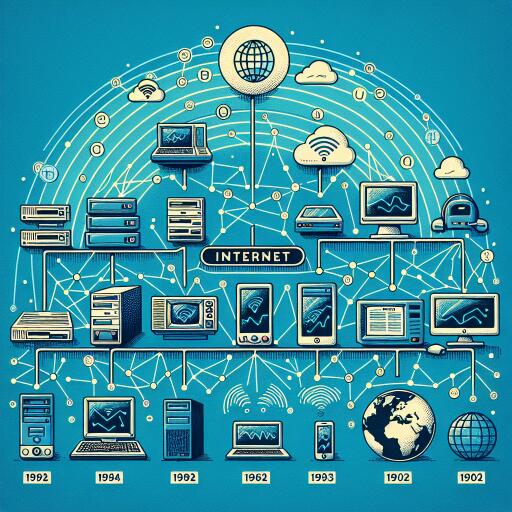The Evolution of the Internet: From ARPANET to the World Wide Web
The internet, a cornerstone of modern civilization, has undergone a remarkable evolution since its inception. This journey from a fledgling network designed for military and research communication to the ubiquitous World Wide Web offers a fascinating glimpse into the power of human ingenuity and collaboration. In this exploration, we navigate through the milestones and breakthroughs that have shaped the internet, impacting how we live, work, and connect with one another.
Our story commences in the late 1960s, with the birth of ARPANET, the brainchild of the United States Department of Defense’s Advanced Research Projects Agency (ARPA). Initially, ARPANET connected four university computers, serving as a testbed for experimenting with digital communication. This nascent network laid the groundwork for the vast digital ecosystem we navigate today.
The 1970s heralded a pivotal innovation with the development of the Transmission Control Protocol/Internet Protocol (TCP/IP). This cornerstone technology standardized how data is transmitted across the internet, ensuring that diverse computer networks could communicate seamlessly with each other. It was the glue that bound the internet, setting the stage for its expansion beyond academic and military domains.
While the technical infrastructure grew, it wasn’t until British computer scientist Tim Berners-Lee entered the scene in the late 1980s that the internet truly began to morph into the World Wide Web we know today. Berners-Lee introduced the first web browser, server, and technologies such as the Hypertext Transfer Protocol (HTTP) and Hypertext Markup Language (HTML). This suite of innovations made the web accessible and navigable, forever changing how we interact with information.
The 1990s marked the internet’s entry into the mainstream, as commercial Internet Service Providers (ISPs) sprouted up, and personal computers became household staples. This period saw an explosion of websites, e-commerce platforms, and online services, weaving the internet into the fabric of daily life and commerce.
Enter the 2000s, and the web took on a new dimension with the advent of social media and Web 2.0. This era was defined by user-generated content, interactivity, and collaboration. Platforms like Facebook, Twitter, and YouTube not only transformed our social interactions but also reshaped how information is created, shared, and consumed.
The evolution of mobile technology in the late 2000s and early 2010s propelled the internet into a new realm of ubiquity. Smartphones and mobile devices ensured that the web was always at our fingertips, paving the way for mobile apps, location-based services, and the Internet of Things (IoT). This accessibility reshaped our daily routines, from shopping and socializing to working and learning.
Today, as the internet continues to evolve, it confronts challenges such as privacy concerns, cybersecurity threats, and the digital divide. Yet, it remains a platform for innovation, offering endless possibilities in healthcare, education, environmental sustainability, and more. The internet’s capacity to foster connectivity, creativity, and progress is boundless as we stride into the future.
Perhaps one of the most triumphant aspects of the internet’s evolution is how it has democratized access to information. Search engines and online resources have obliterated traditional barriers to knowledge, allowing a global audience to tap into an ever-expanding pool of information. This accessibility has empowered individuals to learn, explore, and innovate, setting the stage for a future where knowledge truly is power.
As we reflect on the internet’s journey from ARPANET to the World Wide Web, it’s a testament to the enduring spirit of innovation and collective pursuit of knowledge. What began as a modest network has flourished into a global phenomenon, altering the course of human history. The internet’s evolution continues to inspire, challenging us to envision a connected world that is open, inclusive, and brimming with possibilities for all.










